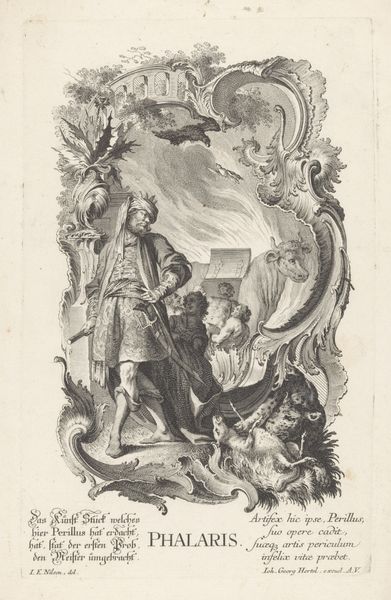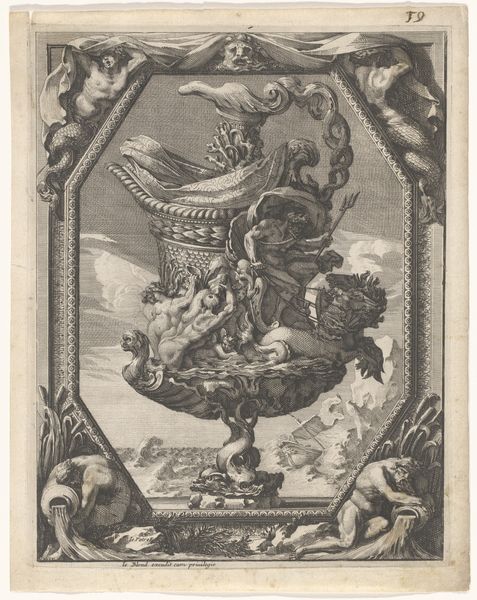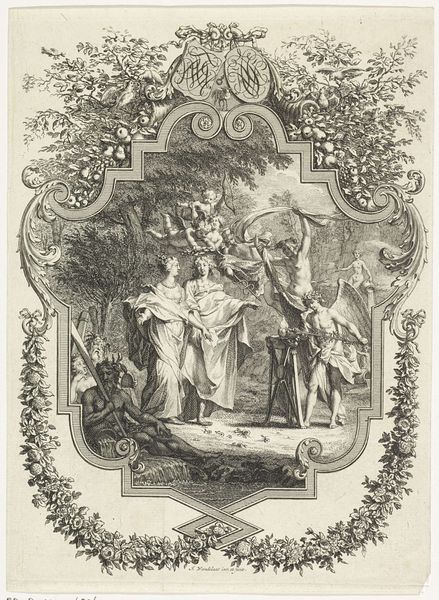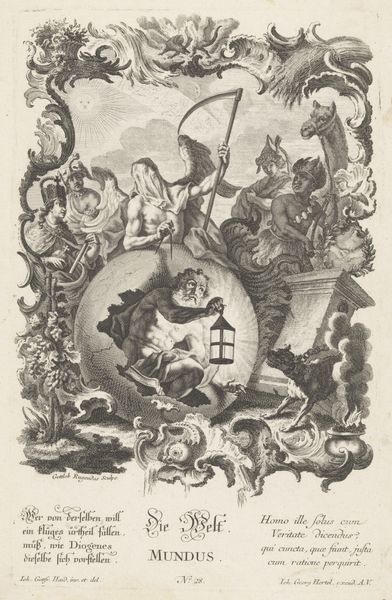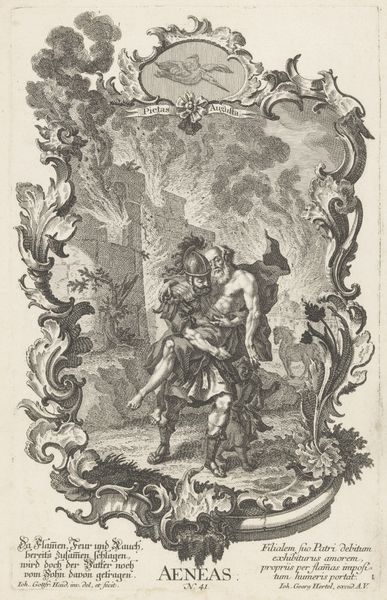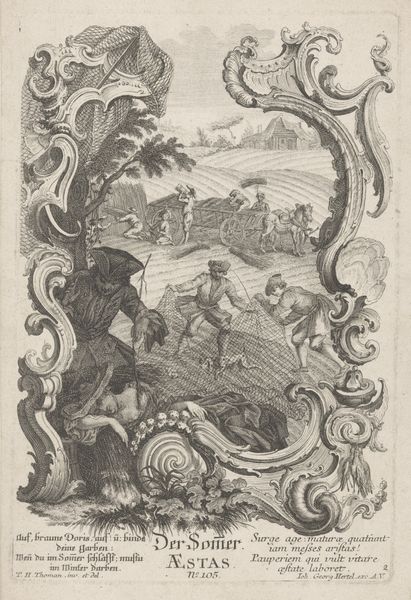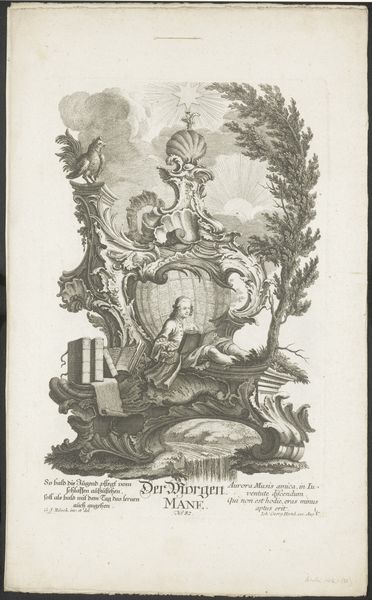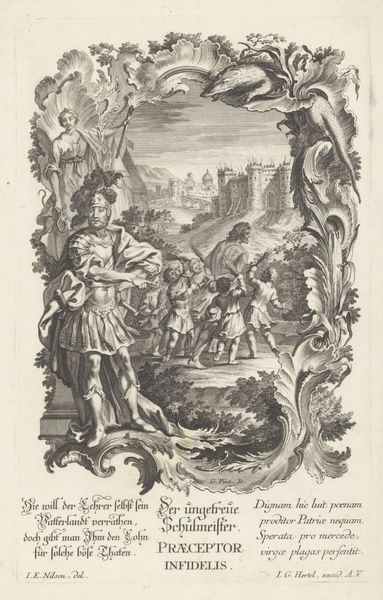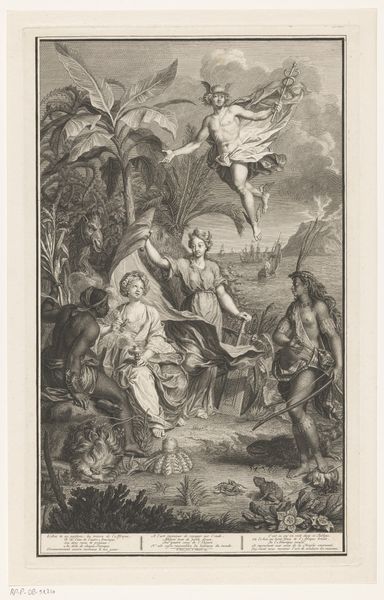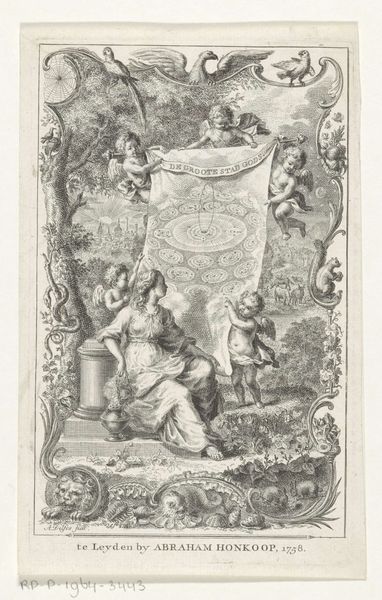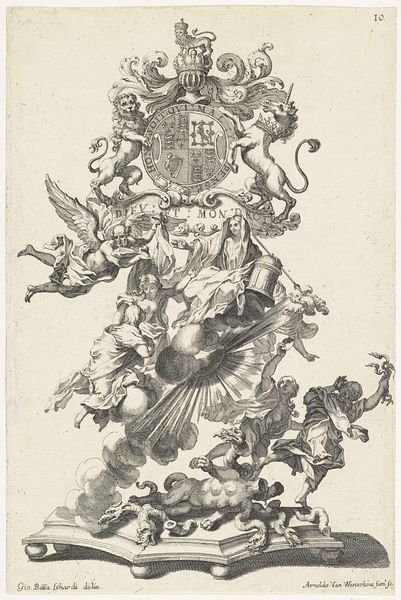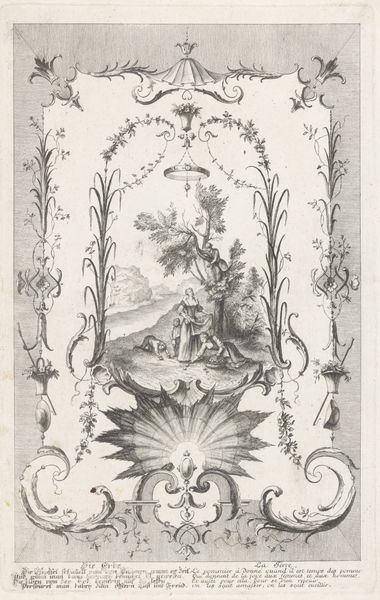
print, engraving
#
allegory
#
baroque
# print
#
pen illustration
#
old engraving style
#
figuration
#
line
#
history-painting
#
engraving
Dimensions: height 324 mm, width 211 mm
Copyright: Rijks Museum: Open Domain
This is Johann Gottfried Haid’s Allegory of Death, an engraving made around the mid-18th century, now at the Rijksmuseum. Its composition, defined by stark contrasts of light and shadow, evokes an immediate emotional response. The engraving balances the ethereal figure of an angel with the grim presence of Death, each occupying opposing sides of the pictorial space. The angel, bearing the tablets of the law, stands in contrast to the skeletal figure of Death, who wields a scythe and stands atop a globe entwined by a serpent, symbols laden with meaning. This juxtaposition isn't merely decorative, but a profound statement about theodicy, questioning divine justice in the face of human suffering. Death, in this context, isn't just a physical end but a semiotic signifier of moral and existential reckoning. The snake around the globe is not only an aesthetic element, it signifies temptation and the fall of man. It is a stark reminder of the consequences of human actions. It invites us to contemplate our existence within the structures of morality, mortality, and meaning.
Comments
No comments
Be the first to comment and join the conversation on the ultimate creative platform.


